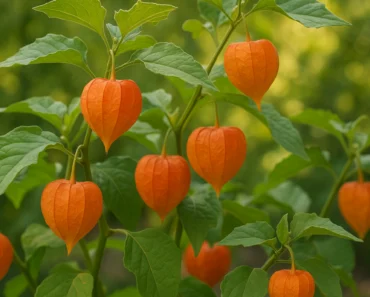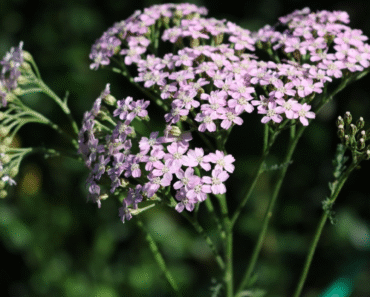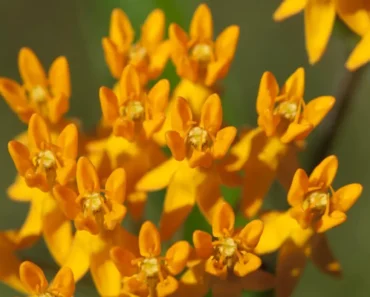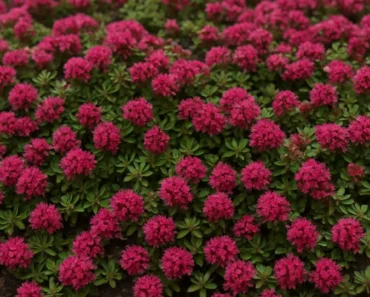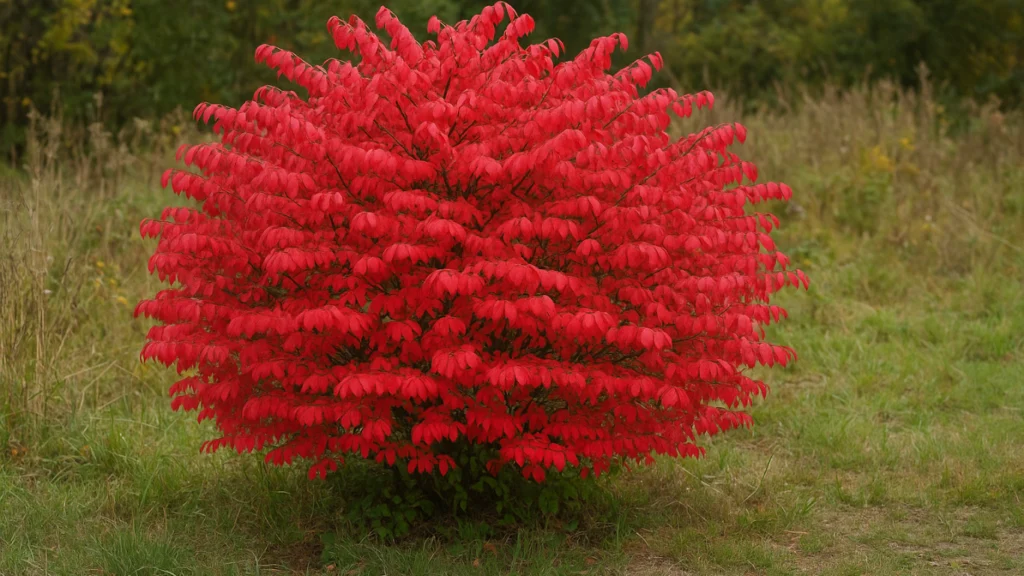
CRITICAL ALERT: Burning Bush (Euonymus alatus) is Highly Invasive in Many Regions!
⚠️ URGENT WARNING FOR GARDENERS ⚠️
Before you consider learning how to propagate burning bush, please understand these critical facts:
• Invasive Status: Burning bush is listed as an invasive species in many parts of North America and elsewhere. It aggressively outcompetes native plants, severely disrupting local ecosystems and reducing biodiversity.
• Check Local Regulations: Before considering propagation or planting, ALWAYS check with your local extension office, Department of Natural Resources, or invasive species council. It may be illegal to plant, sell, or transport burning bush in your area.
• Consider Alternatives: We strongly encourage exploring beautiful, non-invasive native alternatives that offer similar stunning fall color. (See our comprehensive alternatives section below).
• Educational Purpose: This guide provides propagation information for educational purposes and for those in areas where it is not invasive AND for managing existing plants, but we urge extreme caution and prioritize ecological responsibility.
While Burning Bush (Euonymus alatus) is renowned for its brilliant scarlet fall foliage, its aggressive spreading nature poses significant ecological threats. This guide will cover methods of propagation for those with specific, responsible needs—such as replacing a very old, non-spreading cultivar in a contained area where permitted, or for research purposes—but will primarily focus on awareness and eco-friendly choices.
Table of Contents
Understanding Burning Bush (Euonymus alatus) & Its Impact
What is Burning Bush and Why is it a Concern?
The burning bush plant, scientifically known as Euonymus alatus, is a deciduous shrub that has earned both admiration and concern from gardeners and ecologists alike. Understanding this plant’s characteristics and impact is crucial for responsible burning bush plant care.
Identifying Euonymus alatus: Key Characteristics
Recognizing burning bush is essential for proper identification:
- Distinctive corky “wings” on younger branches that give the plant its alternate name, “winged euonymus”
- Opposite, oval-shaped leaves that turn brilliant red to crimson in fall
- Small, inconspicuous greenish flowers in late spring
- Small orange-red berries that appear in fall and are readily consumed by birds
- Dense, rounded growth habit reaching 6-20 feet tall and wide
How Burning Bush Spreads So Effectively
Understanding how burning bush propagates naturally helps explain why it’s such a successful invasive species:
Seed Dispersal by Birds: The orange-red berries are attractive to birds, who consume them and deposit seeds far from the parent plant through their droppings. This biological taxi service allows burning bush to colonize new areas rapidly.
Suckering Growth: Mature plants produce root suckers, creating colonies that expand the original planting area. This vegetative reproduction supplements seed dispersal.
High Germination Rates: Seeds have excellent viability and can remain dormant in soil for several years before germinating when conditions are favorable.
The Ecological Impact of Invasive Burning Bush
The environmental consequences of burning bush invasion are severe:
Dense Thicket Formation: Burning bush forms impenetrable thickets that shade out native understory plants, fundamentally altering forest composition.
Biodiversity Reduction: By displacing native plants, burning bush removes food sources and habitat for native wildlife, including important pollinators and specialized herbivores.
Soil Alteration: Dense burning bush stands can change soil chemistry and moisture levels, making it even more difficult for native plants to reestablish.
Where is Burning Bush Considered Invasive?
Burning bush is considered invasive across much of the northeastern and midwestern United States, including:
- Most New England states
- Mid-Atlantic region
- Great Lakes states
- Parts of the Southeast and Pacific Northwest
Many states have banned the sale of burning bush, while others restrict its planting. Always consult your local extension office or state invasive species program for current regulations in your area.
Methods of Burning Bush Propagation (For Educational & Limited, Responsible Use Cases)
How Burning Bush Propagates (And How It Can Be Done Manually)
If you’re in an area where burning bush is not invasive, or you’re working with existing plants in a research capacity, understanding propagation methods is valuable knowledge. However, remember that these same methods contribute to the plant’s invasive success in natural areas.
A. Propagation by Seed (How Nature Does It – Often Undesirable for Gardeners)
Seed Collection & Stratification
Burning bush seeds require specific treatment to germinate successfully:
- Harvest berries in late fall when they turn bright orange-red
- Clean seeds by removing the fleshy berry coating (wear gloves, as some people are sensitive)
- Cold stratification is essential – mix seeds with slightly moist peat moss or sand
- Refrigerate the mixture at 32-40°F for 90-120 days
- Check periodically to ensure the medium doesn’t dry out or become moldy
Sowing Seeds & Seedling Care
After stratification:
- Sow in spring in a well-draining seed starting mix
- Cover lightly with 1/4 inch of soil
- Maintain consistent moisture but avoid waterlogging
- Provide bright, indirect light
- Expect germination in 2-4 weeks at 65-70°F
Important Note: Seed propagation significantly contributes to burning bush’s spread into natural areas. This method should only be used in controlled research settings.
B. Propagation by Cuttings (Most Common Manual Method)
Learning how to propagate burning bush through cuttings is the most reliable method for home gardeners, though it should be approached with extreme caution.
Step 1: Best Time to Take Cuttings
Timing is crucial for successful burning bush plant care and propagation:
- Softwood cuttings: Late spring to early summer (May-June)
- Semi-hardwood cuttings: Mid to late summer (July-August)
- Early morning is best when plants are fully hydrated
Step 2: Taking Cuttings
Proper cutting technique ensures higher success rates:
- Select healthy shoots 4-6 inches long from current year’s growth
- Make clean cuts just below a leaf node using sharp, sterile pruners
- Remove lower leaves leaving 2-3 pairs at the top
- Wound the stem by making a shallow scrape on one side (optional but helpful)
Step 3: Rooting Cuttings
Creating optimal rooting conditions:
| Rooting Element | Specification |
|---|---|
| Rooting Hormone | Use IBA (indole-3-butyric acid) at 1000-3000 ppm for better results |
| Rooting Medium | 50% perlite, 30% peat moss, 20% coarse sand |
| Container | 4-inch pots with drainage holes |
| Humidity | 80-90% using plastic bags or propagation domes |
| Temperature | 65-75°F soil temperature |
| Light | Bright, indirect light (no direct sun) |
Step-by-Step Rooting Process:
- Dip cutting in rooting hormone powder
- Insert into pre-moistened rooting medium
- Water gently to settle medium around cutting
- Cover with clear plastic bag or place in propagation dome
- Mist daily to maintain humidity
- Check for roots after 4-6 weeks by gently tugging
Step 4: Caring for Rooted Cuttings
Once roots develop:
- Gradually reduce humidity over 1-2 weeks
- Transplant to individual 6-inch pots with potting mix
- Harden off gradually if planning to plant outdoors
- Monitor closely for the first month after transplanting
C. Propagation by Division (Less Common for Shrubs, but Possible from Suckers)
Mature burning bush plants often produce suckers that can be separated:
- Identify suckers growing from the root system in early spring
- Dig carefully to expose the connecting root
- Sever with clean, sharp spade ensuring each piece has roots
- Replant immediately at the same depth as the parent plant
D. Layering (Occasionally Possible)
This method works well for lower branches:
- Select flexible branch that can reach the ground
- Wound the branch where it will contact soil
- Bury wounded section 2-3 inches deep
- Secure with wire or stake
- Keep soil consistently moist
- Separate from parent plant after one growing season
Managing Existing Burning Bush & Preventing Unwanted Spread
Already Have Burning Bush? Responsible Management Strategies
If you currently have burning bush plants on your property, responsible management is crucial to prevent further ecological damage.
Preventing Seed Formation/Spread
Deadheading Strategy:
- Remove flowers immediately after blooming in late spring
- Cut back any berry-producing branches in late summer
- This is labor-intensive on large shrubs but essential for preventing spread
Timing Considerations:
- Monitor plants closely from May through October
- Remove any missed berries before birds can consume them
Controlling Suckers and Seedlings
Regular Monitoring:
- Check around parent plants monthly during growing season
- Pull or cut any new seedlings immediately
- Remove suckers at ground level, including root portions
Maintenance Schedule:
| Season | Action | Frequency |
|---|---|---|
| Spring | Remove suckers and seedlings | Bi-weekly |
| Summer | Monitor for new growth | Monthly |
| Fall | Final seedling removal | Before first frost |
| Winter | Plan removal strategy | As needed |
Considerations Before Removing an Established Plant
If you decide to remove your burning bush entirely:
Best Removal Methods:
- Cut the shrub to ground level in late fall
- Treat stumps with systemic herbicide (if desired)
- Monitor for regrowth and retreat as necessary
- Replant the area with native alternatives immediately
Disposal:
- Never compost burning bush material
- Burn where permitted, or dispose of in municipal waste
- Do not move plant material to natural areas
THE MOST IMPORTANT SECTION: Eco-Friendly Alternatives to Burning Bush
Beautiful & Benign: Stunning Non-Invasive Alternatives to Burning Bush
The best approach to burning bush plant care is often replacement with native or non-invasive alternatives that provide similar aesthetic appeal without ecological harm.
Top Native Alternatives for Spectacular Fall Color
Fothergilla (Fothergilla gardenii, F. major)
- Fall Color: Brilliant orange, red, and yellow combinations
- Growing Conditions: Partial shade to full sun, acidic soil
- Size: 3-8 feet depending on species
- Why Choose: Native to southeastern U.S., supports native wildlife, fragrant spring flowers
Virginia Sweetspire (Itea virginica)
- Fall Color: Intense red-purple that rivals burning bush
- Growing Conditions: Adaptable to wet or dry soils, partial shade to full sun
- Size: 3-5 feet tall and wide
- Why Choose: Native wetland plant, fragrant white flower spikes, excellent for rain gardens
Staghorn Sumac (Rhus typhina)
- Fall Color: Brilliant orange-red leaves and persistent red berry clusters
- Growing Conditions: Full sun, drought tolerant once established
- Size: 15-25 feet tall, can sucker but less problematic than burning bush
- Why Choose: Native throughout eastern North America, provides food for wildlife
Highbush Blueberry (Vaccinium corymbosum)
- Fall Color: Stunning red, orange, and yellow combinations
- Growing Conditions: Acidic soil, full sun to partial shade
- Size: 6-12 feet tall
- Why Choose: Edible berries, supports native pollinators, beautiful white spring flowers
Ninebark (Physocarpus opulifolius)
- Fall Color: Yellow to reddish-brown
- Growing Conditions: Extremely adaptable, drought tolerant
- Size: 5-10 feet tall and wide
- Why Choose: Native throughout much of North America, attractive exfoliating bark, clusters of white flowers
Red Chokeberry (Aronia arbutifolia)
- Fall Color: Brilliant red leaves and persistent red berries
- Growing Conditions: Adaptable to various soils and moisture levels
- Size: 6-10 feet tall
- Why Choose: Native throughout eastern U.S., extremely valuable for wildlife, edible berries
Regional Considerations
For Northeastern Gardens: Focus on native alternatives like fothergilla, Virginia sweetspire, and native viburnums.
For Midwestern Gardens: Consider ninebark, sumac species, and native dogwoods.
For Southeastern Gardens: Red chokeberry, native azaleas, and sweetspire excel in this region.
Frequently Asked Questions (FAQ) About Burning Bush
Your Top Burning Bush Questions Answered (Ethical & Practical FAQ)
How do I stop my burning bush from spreading?
The most effective approach combines several strategies:
- Remove all berries before they ripen each fall
- Cut and remove any suckers immediately when spotted
- Consider complete removal and replacement with native alternatives
- Never allow berries to remain on the plant or fall to the ground
Is it illegal to plant burning bush in my state?
Many states have restrictions or bans on burning bush:
- Connecticut, Massachusetts, and New Hampshire prohibit sales
- Several other states are considering similar legislation
- Always check with your local extension office or state invasive species program
- Regulations change frequently as awareness of invasive impacts grows
What plants look like burning bush but aren’t invasive?
Several excellent alternatives provide similar fall color:
- Fothergilla species offer comparable brilliant reds and oranges
- Virginia sweetspire provides intense red-purple fall color
- Native dogwood species give excellent red fall color
- Oakleaf hydrangea offers burgundy-red fall foliage
- American hornbeam provides beautiful orange-red fall color
How fast do burning bush cuttings root?
Under optimal conditions:
- Softwood cuttings typically root in 4-6 weeks
- Semi-hardwood cuttings may take 6-8 weeks
- Success rates improve significantly with rooting hormone
- Maintaining proper humidity is crucial for success
Why is burning bush bad for the environment?
Burning bush causes ecological damage through:
- Habitat displacement: Forms dense thickets that crowd out native plants
- Biodiversity loss: Reduces food sources for native wildlife
- Ecosystem disruption: Alters natural plant communities that evolved over thousands of years
- Soil changes: Dense stands can modify soil chemistry and moisture patterns
Can I keep burning bush if I prevent it from spreading?
While theoretically possible, practical challenges include:
- Requires constant vigilance to remove all berries annually
- Suckers must be removed promptly and completely
- Risk of accidental spread remains high
- Time and effort are better invested in native alternatives that provide equal beauty
Conclusion: Making Informed & Eco-Conscious Gardening Choices
Propagate with Caution, Plant with Conscience
Understanding how to propagate burning bush is valuable knowledge, but using this information requires careful consideration of ecological consequences. The invasive risks of Euonymus alatus far outweigh its ornamental benefits in most situations.
We strongly encourage choosing native or non-invasive alternatives that offer spectacular fall color without threatening local ecosystems. These alternatives often provide additional benefits like supporting native wildlife, offering seasonal interest beyond fall color, and requiring less intensive management.
If propagation is undertaken in areas where burning bush is not invasive, or for specific research purposes, do so with extreme care to prevent escape into natural areas. Always verify local regulations before proceeding with any burning bush planting or propagation activities.
The gardening community has tremendous power to protect our native ecosystems by making informed plant choices. Every decision to choose native alternatives over invasive species contributes to healthier, more resilient local environments.
Call to Action: What are your favorite non-invasive shrubs for fall color? Share your recommendations and help others garden responsibly in the comments below! Together, we can create beautiful gardens that celebrate and support our local ecosystems.
Remember: The most responsible approach to burning bush plant care is often replacement with native alternatives. Before learning how to propagate burning bush, consider whether your garden—and your local ecosystem—might be better served by one of the many stunning native alternatives available.
Author
George Wine is a seasoned gardening expert with over 20 years of experience in the field of horticulture. His passion for plants and nature has driven his career, where he has honed his skills in various aspects of gardening, from landscape design to plant care. George holds a Master of Science in Horticulture from the University of California, Davis (UC Davis), a prestigious institution known for its research and advancements in plant science.
Throughout his career, George has worked with a diverse range of clients, offering tailored solutions to enhance outdoor spaces and create thriving gardens. His knowledge and expertise allow him to provide invaluable advice, ensuring that both novice and experienced gardeners achieve their gardening goals. Whether you’re looking for tips on sustainable gardening practices, innovative design ideas, or advice on specific plant species, George is here to help you cultivate the garden of your dreams.


